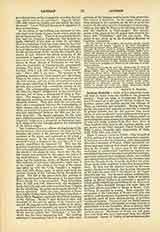

Lascaris, CONSTANTINE, of Constantinople, Greek scholar, b. 1434; d. at Messina in 1501. Made a prisoner by the Turks on the fall of Constantinople, he probably stayed the greater part of seven years in Corfu; he made a visit to Rhodes where he acquired some manuscripts; finally came to Italy and settled at Milan as a copyist of manuscripts. His work on the eight parts of speech presented to Princess Hippolyta Sforza procured from her father a request to teach the princess Greek. Lascaris followed the princess to Naples when she married Alfonso II (1465). The following year he left for Greece, but the vessel stopping at Messina, he was urged to stay there, consented, and died there after many years, bequeathing to the city his seventy-six manuscripts. They remained at Messina until 1679, and were then moved first to Palermo and later to Spain, where they are now in the National Library of Madrid. Constantine Lascaris was above all a tutor and a transcriber of manuscripts. One of his pupils was the future Cardinal Bembo. His industry as a copyist was soon superseded by the art of printing. He was himself the author of the first book printed in Greek, a small grammar (Milan, 1476) entitled “Erotemata”
PAUL LEJAY

